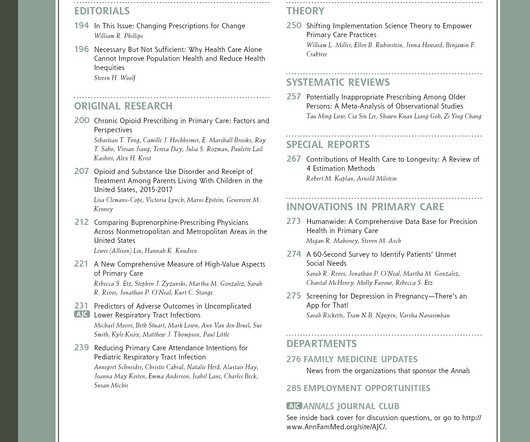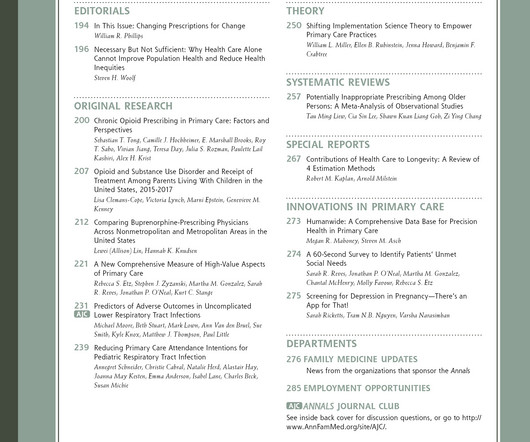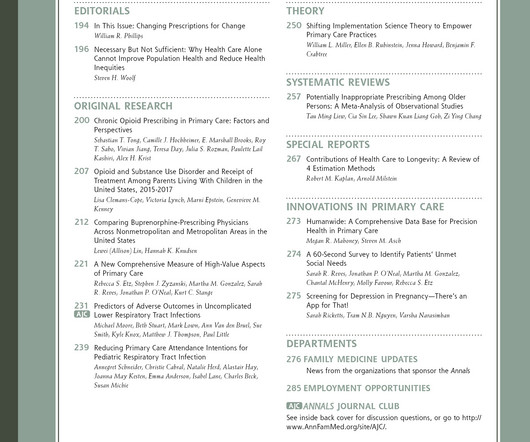Compass Rose for Generating Community-based Referrals via Epic: Best Practices and Lessons Learned [Social determinants and vulnerable populations]
Annals of Family Medicine
NOVEMBER 20, 2024
Study Design and Analysis: We used information gathered from site visits and team meetings to understand how Compass Rose was being utilized across sites. Setting or Dataset: We used data from Epic on social needs screening and Compass Rose utilization.
















Let's personalize your content